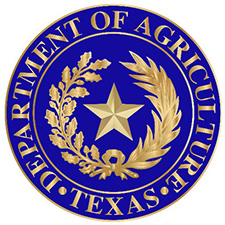(AG Insider) The huge job losses caused by the coronavirus pandemic — 22 million Americans out of work in just four weeks — may be followed by the highest SNAP enrollment ever as people seek help buying food. Participation would near 50 million people if the same portion of the population receives food stamps as during the Great Recession, although economic conditions arguably are worse now.
“The expectation is that participation in SNAP is going to go up and might exceed the high levels of the recession,” said Sara Bleich, a professor at Harvard’s school of public health on Wednesday. Bleich took part in a teleconference organized by Healthy Eating Research, which has advocated a temporary 15 percent increase in food stamp benefits.
Some 37 million people were on SNAP rolls at latest count. The record is 47.6 million in fiscal 2013 during the slow recovery from the 2008-09 recession.
The National Governors Association supported the temporary SNAP increase in a letter to congressional leaders requesting additional assistance in battling the coronavirus. Anti-hunger groups say benefits should be increased until the economy recovers. Increased benefits — which, at 15 percent, would be about $25 a month per person — will alleviate hunger and stimulate spending, they argue.
Agriculture Secretary Sonny Perdue said an additional $2 billion a month is going to SNAP recipients under terms of the “Families First” law enacted in March. It told the USDA to set benefits at the maximum amount allowed by SNAP. Most households receive a smaller amount because they have some income of their own.
“USDA is providing a 40 percent increase in SNAP benefits to ensure that low-income individuals have enough food to feed themselves and their families during this national emergency,” said Perdue.
The Center on Budget and Policy Priorities said the emergency allotments will not help the neediest 12 million SNAP recipients who already receive the maximum benefit. The think tank said that under the proposed 15 percent increase, spending would rise by $5.7 billion this year and by $10.6 billion in fiscal 2021.
When SNAP enrollment peaked, more than 15 percent of Americans received food stamps. A similar rate today, with a population that is 12 million people larger, would mean a roll of 49.9 million. Annual unemployment during the Great Recession reached a high of 9.9 percent in 2010 and was on its way down when SNAP participation, and costs, crested in 2013. The USDA said it did not have projections for the impact of the coronavirus on SNAP. A food policy expert said enrollment exceeding the levels during the recession was possible given the larger U.S. population and the abrupt deterioration of the economy.
Stay-at-home orders and other aggressive steps to slow the spread of the coronavirus erased nearly all the jobs created since the recession, said the Washington Post. It cited two economists who estimated that the jobless rate exceeds 20 percent at present and would be close to 10 percent through the end of the year.
Alabama received approval from the USDA on Wednesday to run a “P-EBT” program, which provides financial assistance to low-income families whose children lost access to free or reduced-price meals because of school closures. Michigan, Rhode Island, North Carolina, Massachusetts, Arizona, and Illinois are also cleared to operate Pandemic Electronic Benefit Transfer programs.
“USDA is maximizing our services and flexibilities to ensure children and others who need food can get it during this coronavirus epidemic,” said Perdue.
P-EBT benefits are expected to average $114 per child, per month, said Bleich. She and her Healthy Eating Research colleagues said Congress should help schools by providing additional funds for food programs so they can offer protective equipment to workers and shoulder the additional costs of preparing and distributing meals to low-income students during the pandemic.
Today’s quick hits, April 22, 2020
More meatpacking plants affected by Covid-19: Thirty-four workers tested positive for Covid-19 at a JBS Swift plant in Marshalltown, Iowa. And a Tyson plant in Columbus Junction, Iowa, resumed limited operations after being shuttered for two weeks during which 148 cases and two deaths were linked to the facility.
Pandemic reaches processed food (Wall Street Journal): Cases of Covid-19 have also temporarily shuttered facilities where packaged foods are made, like a Kraft Heinz macaroni and cheese plant in Missouri.
Tight supplies of PPE on California farms (UCANR): A survey by the California Department of Pesticide Regulation found personal protective equipment to protect farm workers from the coronavirus, pesticides, dust and other health hazards is in short supply in 39 of the state’s 58 counties.
Culling chickens as egg demand shifts (Minneapolis Star Tribune): Kerry Mergen, who produces eggs under contract, says at least four other farmers share his story — his egg-laying hens were killed because demand has plummeted for eggs in the food service sector due to the coronavirus.
Three more states join online SNAP (USDA): Kentucky, Missouri and Texas were approved to join a program that allows SNAP recipients to buy groceries online; the starting date for purchases will be announced later.
Record enrollment for crop subsidies (USDA): Producers signed a record 1.77 million contracts to enroll in the two major crop subsidy programs, Agriculture Risk Coverage and Price Loss Coverage, for 2019 production; enrollment for 2020 crops ends on June 30.











